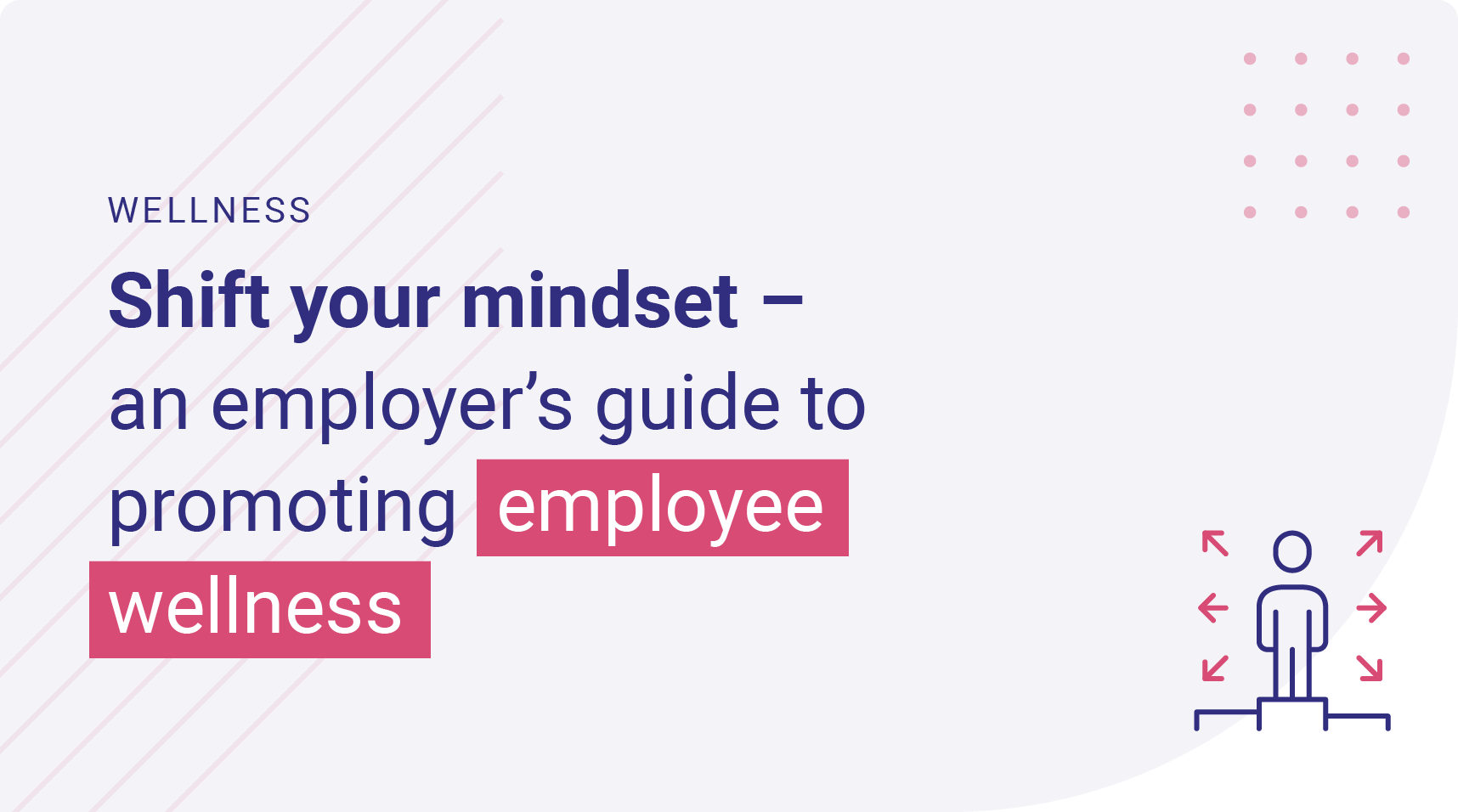Shift your mindset – an employer’s guide to promoting employee wellness
SHARE THIS POST:

Your employees are one of the most important assets in your organization, so investing in their well-being is a wise decision. The traditional approach to employee health was reactive, whereas today, employers are expected to take a proactive stance toward employee wellness.
In our experience, creating a company culture built around health and wellness can form a well-rounded appreciation by employees. Wellness programs have grown in popularity because of the pandemic, where organizations are focusing on employee health through various programs, remote events, physical fitness challenges and much more. These types of wellness programs have proven to increase employee morale and productivity, and when employees are happy, clients are equally as happy.
What is an Employee Wellness Program?
Depending on company goals, wellness programs can vary. An organization might promote healthy lifestyles among its employees, spouses, and dependents. There are many types of employee wellness programs that an employer can implement, and these initiatives address different areas and dimensions of well-being.
Some examples of wellness programs we’ve seen:
- Mental Health Day – the employer organized a Lunch n’ Learn with a specialist in mental health and encouraged their employees to share their experiences and eliminate the stigma associated with mental health.
- Fitness Week – the employees were split up into several teams, and they competed on activity points that they obtained through various exercises, activities, and sports (managed at no cost through Participaction).
- Employee Assistance Program – as an advocate for general well-being, this employer wanted to provide their employees with the right tools for every aspect of their health. With two employee presentations and a recorded webinar, the plan launched properly and the uptake from employees was incredible.
- Wellness at the workplace – to shake things up, an employer decided to run monthly Nerf Battles! Each employee was given a Nerf gun to keep at their desks, and without any warning, an email would come through kicking off the battle. This brought fun into the workplace, though considered a more unconventional approach to wellness.
There are no bounds to a wellness program. Using your imagination to help your employees feel healthy and happy at the workplace is crucial in developing a culture of wellness.
Factors that you need to consider while setting up a wellness program:
Wellness Committee
Employers cannot run employee wellness programs on their own. A wellness committee or a social club that includes different levels of your organization should be implicated in the process to ensure its success. This group will be responsible for implementing, evaluating, and developing wellness programs, and help drive interest from their colleagues through various channels.
Set the right goals
A wellness program must be realistic, reasonable, and fit well within the realm of the company culture. A Nerf battle in a law firm would be exciting, but there would likely be less uptake from the employees. Goals should be well-defined and built on a clear mission statement. What are you trying to accomplish? What’s important to your organization?
Develop an operating plan
Your wellness program won’t produce any results without proper execution. Your program’s success depends on having a clear plan of action, and key performance indicators (KPIs) that need to be attained. An annual review of the activities and programs you’ve run throughout the year is a great habit to adopt, as this will allow you and your Wellness Committee to regroup and set up a new plan for the coming year.
Encourage Wellness Ambassadors
Aside from the Wellness Committee, your wellness program can reach a new level of success with Wellness Ambassadors. These are individuals that advocate the wellness program throughout the year and drive-up interest with their colleagues. The most effective wellness programs are those with constant exposure, and what better way than getting encouraged to participate by one of your fellow teammates?
Set a budget
It is essential to have a detailed budget when comparing program costs and desired outcomes. Budgets should consist of various items, including program materials, external vendors or providers, employee incentives, and more. In the case of wellness programs, a general ROI analysis is not completely applicable. Rather, you should examine the overall reaction to your wellness campaigns, and how different you’ve set yourself from the competition.
Create a supportive work environment
Creating a work environment that is conducive to employee well-being is important to any organization. There should be opportunities, rewards, and encouragement – the workplace should celebrate and reward employees who model healthy behaviour. Aspects of a wellness program should be employee-driven, from its design and promotion to its implementation and evaluation.
Benefits of incorporating an employee wellness program
Developing a wellness program can reduce healthcare costs, consistent with the correlation between health and job satisfaction. There are many benefits to wellness programs at the workplace, although they may not be immediately apparent to employers. The following are but a few of the advantages of setting up a wellness program:
- Increase in employee morale
- Productivity increase
- Easier to recruit and retain employees
- Absenteeism is reduced
- Reduce health risks
- Differentiate from the competition
- Create a sense of camaraderie among employees
Wellness programs require a little creativity, but the impact on your workforce can be resounding. Taking the time to put thought into your goals and your approach can be all the difference in making it successful!
Innovation that puts you in control of your group benefits










